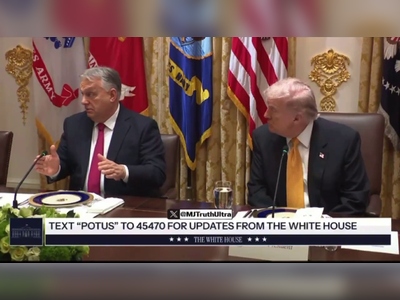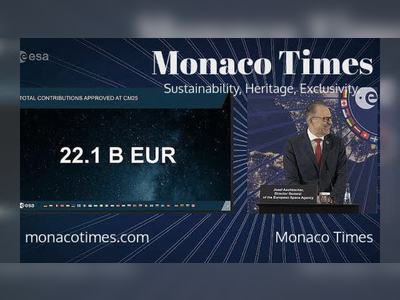U.S.-China Trade Relations: Analyzing the Current Landscape
Former President Trump's evolving strategy amid ongoing trade tensions sparks discussions on future economic impacts.
As tensions persist between the United States and its economic partners, the focus has shifted to the strategic maneuvers of former President Donald Trump concerning trade policies and their implications for markets.
Currently, the tone from Trump's camp indicates a move away from a previous stance of total confrontation regarding tariffs, suggesting that he is entering a more negotiable phase.
This shift may lead to a series of agreements aimed for completion before the summer of 2025, allowing Trump to later prioritize tax reform, especially in terms of tax cuts.
While some 'easier' agreements may materialize quickly, negotiations with key players like China and the European Union (EU) are anticipated to be more complex.
The trade climate with China is characterized by prolonged uncertainty, as the U.S. administration remains focused on maintaining scrutiny over China, which could include ongoing investment restrictions.
Thus, even if partial agreements emerge, the overall uncertainty in the trading environment is expected to be greater than under the previous Biden administration.
The recent resumption of communication between U.S. and Chinese leadership, exemplified by Beijing's appointment of a new Deputy Commerce Minister, Wang Wentao, is being perceived as a positive sign for potential negotiations.
However, the discussions remain in preliminary stages, and any reductions in tariffs are likely to be heavily influenced by market pressures and industrial demands.
Currently, average tariffs are exceeding 20%, a peak not seen for decades, with inflationary effects becoming more evident by May 2025 as industries exhaust their existing stockpiles.
The immediate economic implications for the United States include rising inflationary pressures alongside tightening border policies, which constitute a potentially volatile mix in the short term.
Looking ahead, U.S. Treasury Secretary Scott Bessent has suggested a two to three-year horizon for rebalancing Sino-American relations, a timeline that may be viable in commercial terms, although the technological sector appears to be decoupling at a much faster pace due to the rapid emergence of Chinese competitors in technology.
Managing multiple concurrent trade fronts poses another challenge for Trump’s administration, with negotiations with countries like Japan, India, Canada, Europe, and Mexico all requiring considerable attention and resources.
The viability of achieving meaningful agreements by June 2025 is being closely observed.
Speculation surrounding the U.S. Federal Reserve's leadership under Jerome Powell remains, with concerns about political pressures might surface.
Despite challenges, Powell is presently refraining from drastic measures.
The impending need for the Treasury to issue new bonds post-debt ceiling resolution may compel the Federal Reserve to inject liquidity, although this will depend on the evolving economic landscape.
The potential removal of Powell could symbolize a significant shift, affecting the Federal Reserve's independence, the dollar's valuation, long-term interest rates, and capital flows.
Interest rate changes by the Federal Reserve are unlikely in the short term due to inflationary risks.
In contrast, the European Central Bank (ECB) is projected to continue its rate cuts in response to declining global growth forecasts.
Currently, the tone from Trump's camp indicates a move away from a previous stance of total confrontation regarding tariffs, suggesting that he is entering a more negotiable phase.
This shift may lead to a series of agreements aimed for completion before the summer of 2025, allowing Trump to later prioritize tax reform, especially in terms of tax cuts.
While some 'easier' agreements may materialize quickly, negotiations with key players like China and the European Union (EU) are anticipated to be more complex.
The trade climate with China is characterized by prolonged uncertainty, as the U.S. administration remains focused on maintaining scrutiny over China, which could include ongoing investment restrictions.
Thus, even if partial agreements emerge, the overall uncertainty in the trading environment is expected to be greater than under the previous Biden administration.
The recent resumption of communication between U.S. and Chinese leadership, exemplified by Beijing's appointment of a new Deputy Commerce Minister, Wang Wentao, is being perceived as a positive sign for potential negotiations.
However, the discussions remain in preliminary stages, and any reductions in tariffs are likely to be heavily influenced by market pressures and industrial demands.
Currently, average tariffs are exceeding 20%, a peak not seen for decades, with inflationary effects becoming more evident by May 2025 as industries exhaust their existing stockpiles.
The immediate economic implications for the United States include rising inflationary pressures alongside tightening border policies, which constitute a potentially volatile mix in the short term.
Looking ahead, U.S. Treasury Secretary Scott Bessent has suggested a two to three-year horizon for rebalancing Sino-American relations, a timeline that may be viable in commercial terms, although the technological sector appears to be decoupling at a much faster pace due to the rapid emergence of Chinese competitors in technology.
Managing multiple concurrent trade fronts poses another challenge for Trump’s administration, with negotiations with countries like Japan, India, Canada, Europe, and Mexico all requiring considerable attention and resources.
The viability of achieving meaningful agreements by June 2025 is being closely observed.
Speculation surrounding the U.S. Federal Reserve's leadership under Jerome Powell remains, with concerns about political pressures might surface.
Despite challenges, Powell is presently refraining from drastic measures.
The impending need for the Treasury to issue new bonds post-debt ceiling resolution may compel the Federal Reserve to inject liquidity, although this will depend on the evolving economic landscape.
The potential removal of Powell could symbolize a significant shift, affecting the Federal Reserve's independence, the dollar's valuation, long-term interest rates, and capital flows.
Interest rate changes by the Federal Reserve are unlikely in the short term due to inflationary risks.
In contrast, the European Central Bank (ECB) is projected to continue its rate cuts in response to declining global growth forecasts.









